
Have you ever heard of word segmenting? This essential skill helps kids encode (aka spell) words. Word segmenting means breaking up words into their parts/sounds. An example would be taking the word CAT and "chopping up the word" to say "/c/ /a/ /t/."
This post will include 3 kinds of sound parking lots that my students in kindergarten AND first grade find simply irresistible. To download your 9 different activities now, scroll to the bottom!

*As an amazon affiliate I may receive a teensy commission if you buy something from one of the links in this post, at no additional cost to you. Thank you.
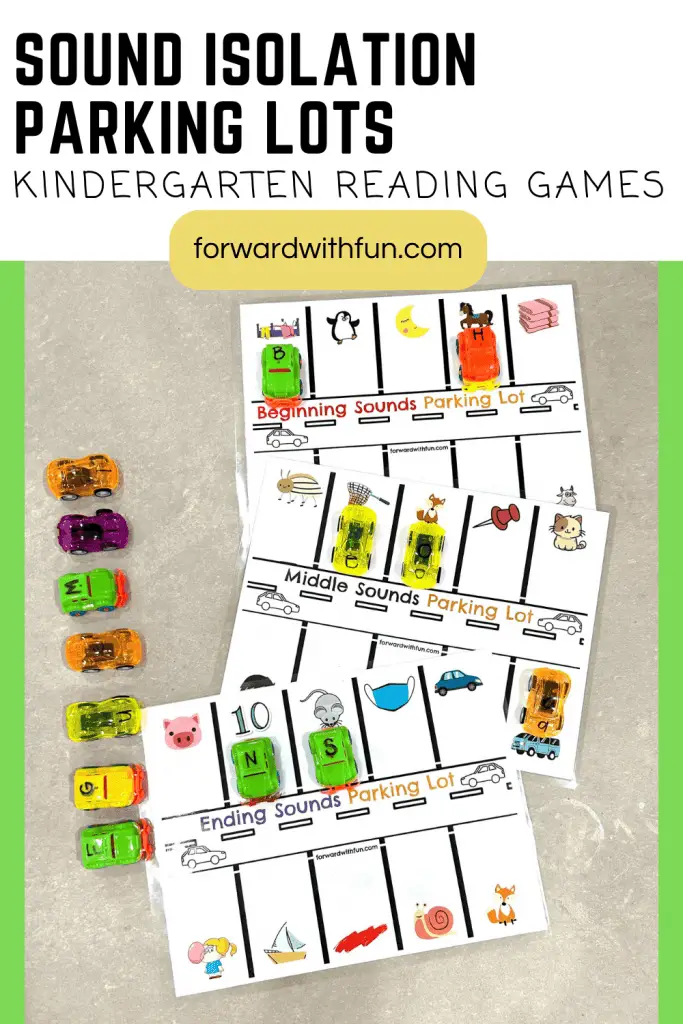
Word segmenting is breaking down words into beginning, middle, and ending sounds. Sometimes segmentation is performed without connection to letters, building up kids' pre-reading skills that fall under the umbrella of phonemic awareness. Once kids begin connecting letters to these segmented sounds, they're learning phonics.
By the end of kindergarten, kids are expected to spell CVC words (consonant vowel consonant words) correctly. In order to do this, they'll need to have the skill of phonemic isolation, to segment beginning, middle, and ending sounds of these words. To spell correctly, kids will need to connect those sounds to the letters they've spent so much time studying.
This is the most kid-approved way to practice all these essential skills! WORD SEGMENTATION parking lots for the win! Woohoo.
The three skills highlighted in these kindergarten level activities are:
As children isolate each sound, they gain the skills to segment the whole word,(especially when they move beyond the beginning sounds).
When I first made these parking lots, I chose beginning sounds only. It turns out, the kids I worked with loved the activity so much that they asked me to create more! And so, I created a whole bundle of beginning, middle, and ending sound parking lots to ensure kids master word segmenting.
You'll find beginning, middle, and ending sound parking lots. Each set will have 3 different mats, so kids can practice each skill 3 different ways, for a total of 9 downloadable parking lots. Bundle them all to save, or buy one at a time based on what you're teaching.
You'll need cars. These cute Amazon cars are the most recent ones I've purchased, and they're just the right size. My original cars pictured here are from the Dollar King store, which might be regional. The kids prefer the Amazon ones though!
These mats will get LOTS of play, so I recommend laminating them before use. Amazon also has my fave laminator and thick, lasting lamination sheets. I've had this laminator for 4 years, and it's still going strong.
Get your 3 beginning sounds lots right here for $3.33 (or grab the discounted bundle at the end of this post.)
Get your 3 ending sounds lots right here for $3.33 (or grab the discounted bundle at the end of this post.) I recommend ending sounds as the second skill to work on before complete word segmenting. If your kiddos are struggling with ending sound skills, here are some great activities to practice before moving onto isolating middle sounds.
Though it seems like middle sound practice should come right after beginning sounds, vowel sounds are the hardest sounds for kids to master. I highly recommend making sure kids have mastered their beginning and ending sounds before moving onto middle sound isolation.
If you only want middle sound parking lots, you can get them HERE. Or scroll down for the bundle of all 9 word segmenting parking lots for only $8!
Get all 9 different printable parking lots to practice beginning sounds, middle sounds, and ending sounds for a steal. Usually $9.99 for all three, now only $8 for the bundle! You'll save 20% by buying them all together.
Phonetic spelling is an essential developmental milestone for any child learning the English language. Often adults overcorrect children’s “misspellings” without understanding the role that phonetic spelling plays.
This post includes a parent letter freebie for you to share with families, in order for them to understand how vital it is for children to use phonetic spelling when they're first learning to write. See if you can easily read it, since in true teacher fashion, I wrote it all phonetically.
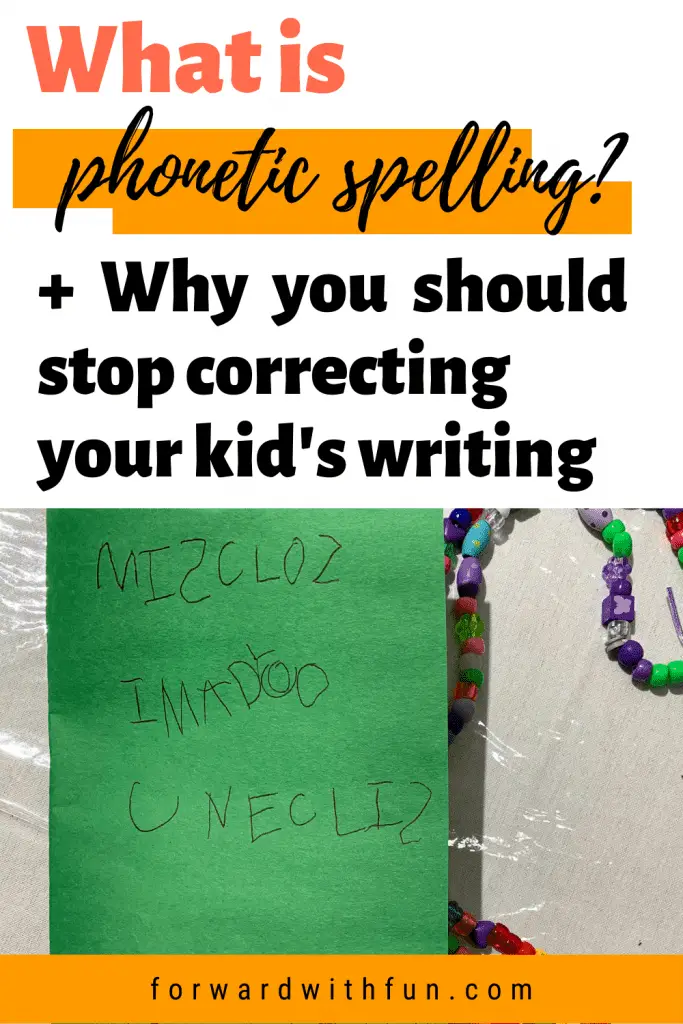
I’ve commonly called phonetic spelling, “kid spelling” in the classroom. Put in terms children understand, phonetic spelling is spelling words by sounding them out.
Sometimes phonetic spelling is referred to as inventive spelling, because children are creating spellings as they go - instead of spelling by memory.
When children are in pre-k and kindergarten, our focus is to teach them the letters and sounds of the alphabet. Each letter has a sound (or two). Children must master these sounds as the first step on their journey to becoming independent readers and writers.
Instead of classifying phonetic spelling as incorrect, I explain there are two kinds of spelling. One is adult spelling, and the other is kindergarten or kid spelling.
Guess what? Both are right. I've ruffled a few feathers on the internet by saying that, but if you keep reading, you’ll understand why.
When you see the following sentence written by a kindergartener, you’ll notice the words are all spelled incorrectly. Yet, if you read the phonetically spelled “words” out loud, you’ll be able to make sense of what was written.

"The flower is in my pocket." Well written, for a child or someone learning English for the first time! So you may have concluded by now that nope, English is not a phonetic language, unlike Spanish, German, and Polish.
The English language has many words that don’t sound as they are spelled: though, knife, far, raspberry, eight, to name a few.
Additionally, English contains many digraphs (ie. sh, ph, wh, ch). That combined with totally silent letters makes it a challenging language to learn.
Don’t even get me started about sight words like do, is, you. And then come the vowels with many different rules, like i before e, vowel teams, silent e, etc.
There are so many rules, that even I, someone who teaches phonics all day, don’t know them all!
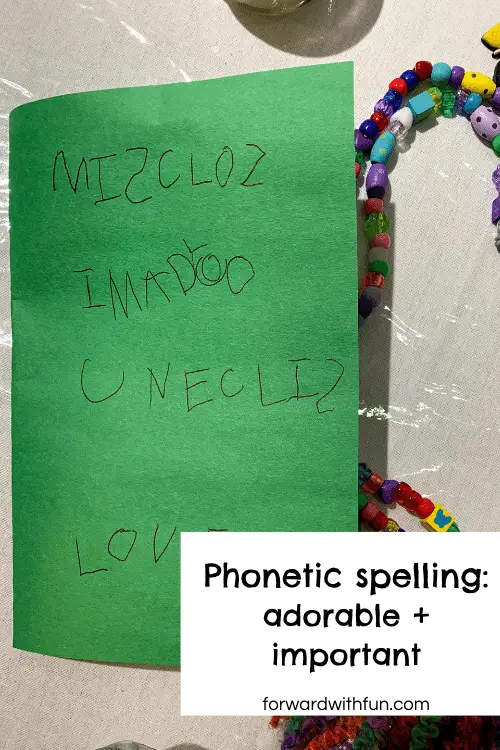
As a parent you might be thinking, “If I don’t correct this spelling, my child will learn how to spell everything incorrectly.”
I understand why people think that! But imagine this: you’re a young child who has no concept of reading and has just learned your alphabet.
After using the alphabet sounds you have been mastering over the last year (20% of your life!) you manage to sound out the word BOT (boat) only to be corrected and told it is in fact, BOAT.
What? This doesn’t make sense!
When we correct children’s spelling of words they have never been taught to spell, they may become discouraged and feel as if they’re not good at writing. After all, they learned their letters, and now the letters are not all they need!
When we encourage them to use phonetic spelling, we are reinforcing all that letter/sound knowledge. Additionally we are opening the doors for them to write without the help of an adult. This is going to create many opportunities for practice and feelings of ownership over their own writing.
I’d much rather that students spell things incorrectly and feel good about the task of writing than shut down and fear writing because they want to make sure everything is spelled like an adult.
Well, no. That doesn’t make sense either.
The spelling you should correct:
If your kid doesn’t know that a silent e makes the vowel “say it’s name,” then you wouldn’t need to tell them that they need an “e” at the end of “make.”
If your child has learned “is” and “of” as their sight words-which are memorized, then they should be spelling them correctly.
So when they learn a new spelling pattern or rule, those are now words that we can encourage them to spell with adult/standardized spelling.
For the rest of the words, encourage and praise phonetic spelling!
This way, we are reinforcing the alphabetic principle, that letters represent spoken sounds. This is also why in kindergarten, focus on teaching phonetically spelled CVC words: cup, kit, mat, bug, etc. These words make sense to children, and they’ll have more success when spelling them.
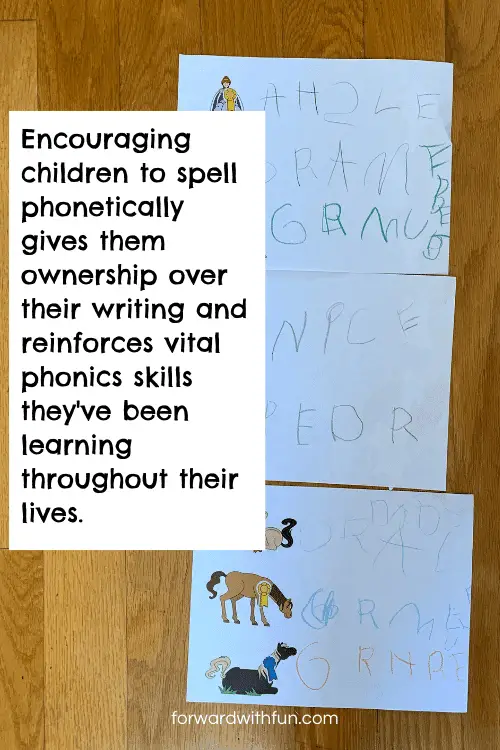
Children often ask how to spell words they want to write.
Instead of telling them what letters to write, try asking the following questions:
By encouraging children to listen for the sounds in the words, we as teachers, are building their phonemic awareness- a major reading and writing set of skills, kids will need to succeed in school.
When they ask you if their spelling is right, you can say yes. Remember, adult spelling is different from kid/kindergarten spelling. Both can be right.
At the end of kindergarten, teachers expect children to be able to write short words with at least a beginning, middle, and ending sound, but longer words take time and practice to learn the adult spelling.
Here is a letter for you to pass out to parents. You may notice, I wrote the letter using phonetic spelling.
Challenge yourself or if you're a teacher, the parents in your class, to read this letter. The letter explains what phonetic spelling is and why it’s such a developmentally important step in becoming a reader and writer.
Click the picture to download your own copy or pin it, to save for later!
Do you encourage phonetic spelling with your students?
When it comes to introducing ending sound activities, kids may feel a little out of their element. For so long, they've been taught phonics with a focus on beginning sounds. "B is for ball!" Now we start telling them that there is an "l" in ball, and they get all discombobulated.
Here are the tips, tricks, and best ending sound activities that I use to teach my own kids and my kindergarten students. These hands-on activities really make the sounds click and stick in their brains. Plus, the best part is...they're super fun and easy to prep.
*As an Amazon affiliate, I may get a small commission for purchases made through links in this post.
This might seems like a no brainer to us, but kids are not aware that there is a beginning, middle, and ending to each word. This concept of a word being a visual thing, rather than just something you say, can really confuse children.
When I set out to teach ending sounds, I always begin by showing my kindergartners the word as three parts. This is often known as using Elkonin boxes, a visual reading strategy to help kids understand the word as made up of separate sounds.
Using the Elkonin visual, I help children segment words into the phonemes, aka sounds, they're made from, and point to each box. By attaching a visual, many light bulbs suddenly go off.
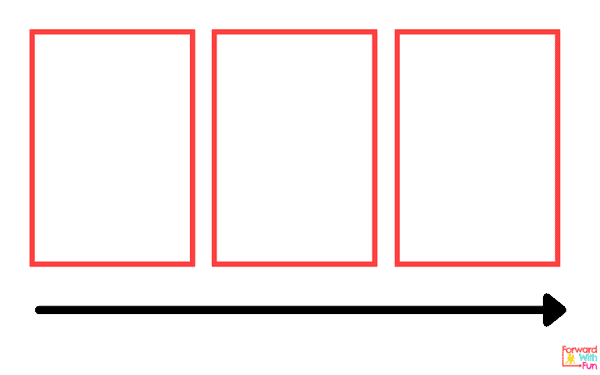
A second strategy for teaching ending sounds, is to speak like a whale, from "Finding Nemo." Elongate the word, and when you hit that last sound, make it super clear: GOOOAAATTTTTTTT. As I do this, I pretend I'm visually pulling a word, as if it were a piece of bubblegum, with the ending sound landing in the palm of my hand. Then I ask, "What sound was here, at the end?"
Stretching the word and asking the kindergartners for the sound (instead of the letter) allows them to work on hearing the ending sound without knowledge of letters yet. This strategy builds an umbrella of skills called phonemic awareness, the understanding that words are made up of sounds.
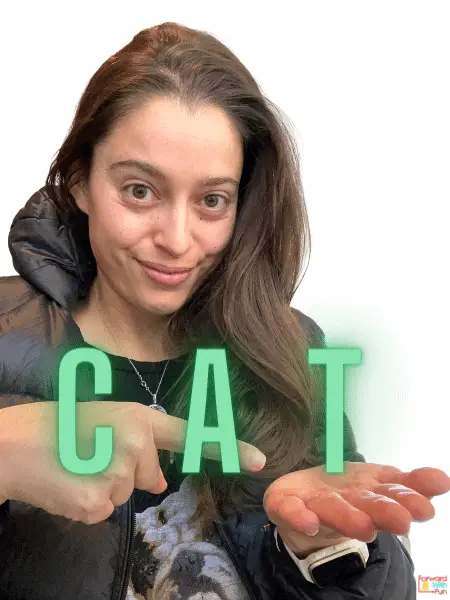
More than anything, I know kids learn best by having fun. So I try to bring the ending sound activities to life through games, imagination, and when possible, movement!
Zoom into ending sounds as kids isolate the sounds in each picture and drive the matching car into the correct parking spot. SO cute! Buy a bundle of 3 RIGHT HERE. Want to check out more parking lots activities? We have got beginning, middle, and ending sounds parking lots in this awesome post.

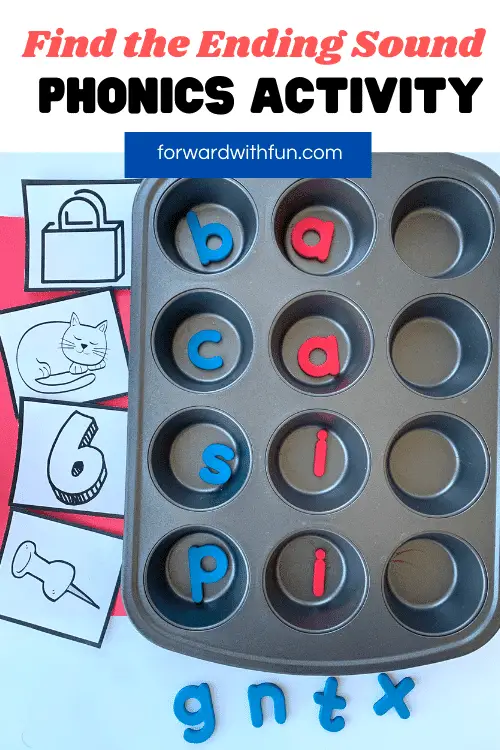
Remember those Elkonin boxes, I mentioned? They can be used to represent sounds or letters, and this muffin pan activity will help kids really visualize the ending sound of each word.
Turning your muffin pan sideways, you now have three perfect sections to help segment each word. This muffin pan game works best with CVC words (that means consonant, vowel, consonant) and you can even find the printable CVC picture cards right here.
These are the alphabet letters we love for teaching phonics. They're magnetic, and the vowels are red which especially helps for teaching middle sounds.

Set up your words, so that only the ending letters are missing. Saying the sounds of the beginning and middle sound, help your kindergartner listen for the missing final sound.
We have played this game for beginning and ending sounds, and it's got to be one of my all-time favorites. Kids always go gaga for this game.
The Toy Thief has stolen some items from around the house that need to be rescued. Now, to teach ending sounds with this game, you must be rather intentional with the objects you choose. For example, an elephant toy, has an obvious ending sound: t. But do you know the ending sound of horse? It's not "e." It's "s."
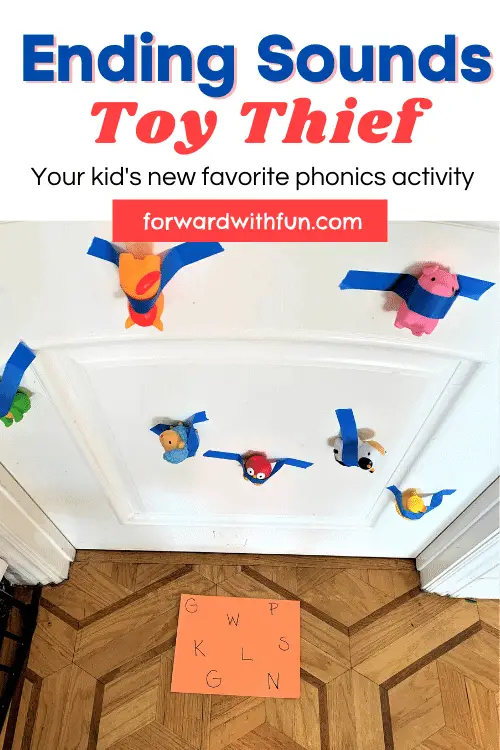
Write the phonetic ending sounds of each word on a piece of paper, and hide the toys. We used blue tape to hang them on our door, but you can also trap them under a laundry basket or hide them in different drawers. Be creative!
Have the kindergartener in your life rescue the toy and match them to their correct ending sound. Remember, it's about hearing the sound at the end of the word, not necessarily the letter. Tarantula would NOT be an "a," it would be the "uh" sound which goes with "u." Grown ups, I know you can do this! Haha!

This game requires barely 3 minutes of prep and also strengthens kids' hand muscles while they play. So let's build those fine motor skills and learn about ending sounds at the same time!
Choose a basket or a pan, and get out some blue tape. Make some overlapping lines over the top of the container so that there are multiple individual sections. In each small section, place a letter that is a common ending sound. I recommend using: g, n, m, p, d, s, r, l, k.
Give your kindergarteners salad tongs or these kid friendly pincers and have them rescue the letter that ends each word you call out: bag, soon, mom, hop, bed, gas, star, bell, sock, etc.
If you're playing this in small groups in a classroom, it would be great fun for the kids to create their own blue tape webs to reduce the prep for you.
This one is quick but effective. Place 3 Post-its notes on a table in front of each kiddo. Have the children clearly print the letters "D," "N," and "K" on them. I like to use 3 very different sounding letters to make it the easiest to discern.
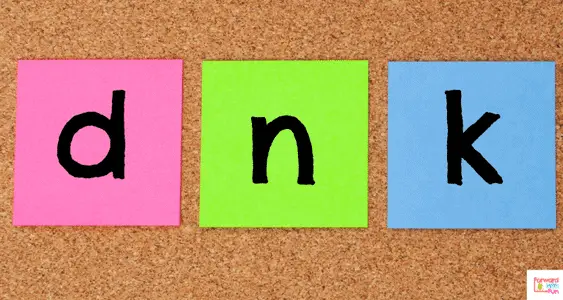
Call out words that end with only those sounds and have the kids SMACK the matching ending sound in front of them.
Want to use those letters for the activity? Perfect. Just call out these words:
Can, Kick, Sad, Bed, Soon, Fine, Pack, Ten, Kid, Sick, Quack, Pen, Red, Fun, Lick, Kitten, Jade, Stick, Bird, Salad.
Invite your child to toss a bean bag at a group of objects. Where does it land? Say the word, and stretch out the word. What sound did you hear at the end?
If you have got a kid that has a lot of energy, this is a great game that incorporates a physical aspect. Kids get excited for their turn to throw the bean bag, and you can't lose. Everything has an ending sound! It's simple but effective.

In this ending sounds activity, everyone wins. This set of BINGO boards all have the same pictures but in different spots. This way, kids aren't copying off one another but still get the joy of always finding a match.
You'll need either magnetic letters or write the following letters out on index cards: D, D, G, M, N, N, P, T, T
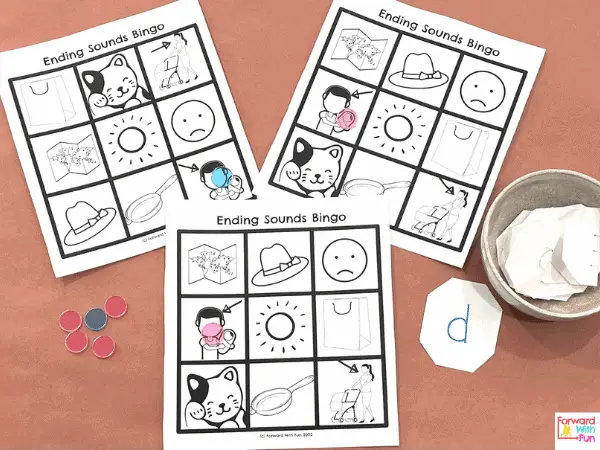
Each time the kids match the letter to the picture, they can use stickers or BINGO chips to cover up the picture.
The most fun way to set up the game is to put each of the ending sounds in an envelope or even in plastic Easter eggs. Have your kiddos choose a letter and find a word that ends with that sound.
Kids will often try to match with beginning sounds, when first learning about ending sounds. When this happens, I use the stretch the word strategy and "hold" the ending sound in my hand. Which sound did you hear at the end?
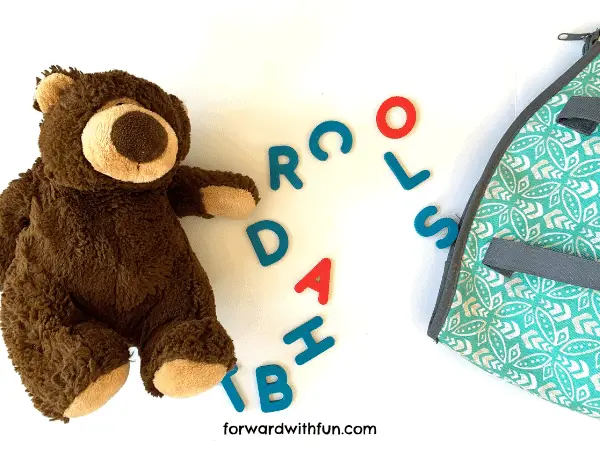
Now this activity is more challenging than the rest, due to the fact that kids will need to be more independent in isolating ending sounds. So I would do this one after you've tried all the rest of the ending sound activities.
In a bag, place the letters that are common ending sounds: D, M, N, R, T, S. There are more, but those will do! Have a stuffed animal host this challenge. Let the Letter Bear pick a letter out of a bag, and have kids go on a hunt for something in the room that ENDs with that letter. It's a challenge, but wow, doesn't it feel great when they get it?
Of all these ending sound activities, which was your favorite?
What is phoneme isolation and why is it SO important for early readers?
Phonemes are sounds. Phoneme isolation is the act of picking out sounds at the beginning, middle, and end of words. This set of skills most commonly refers to picking out sounds in CVC words, aka consonant vowel consonant words and is taught in the following order:

What is an example of phoneme isolation?
A child who can do all three phoneme isolations will know that the beginning sound of log is /l/, the middle sound is /o/, and the ending sound is /g/.
If a child is unable to isolate sounds they will have a really hard time reading and will not be able to write independently.
What sound does rabbit start with? If you said R, you're wrong! The letter R is not a sound, it's a letter.
If you said /r/ (the sound that R makes), you would be spot on! Beginning sound isolation comes before ending and middle sounds so try these activities before moving on:

You can play any of the beginning sound isolation games but switch the phoneme you're focusing on to ending sounds.
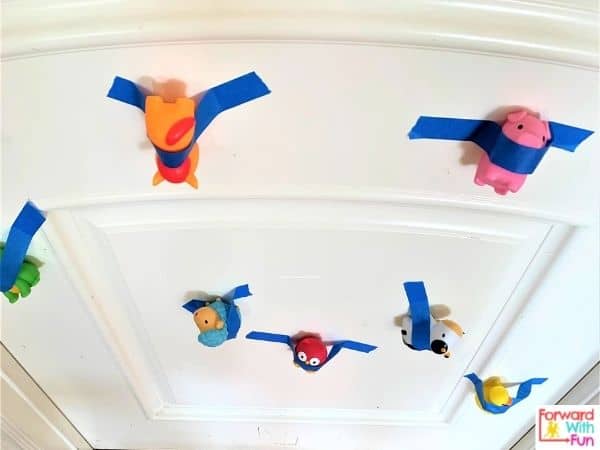
2. Play "Which one?" We play this in the car. I ask my child, "Which one ends in /m/?" Then I give three choices like "sat, bam, or fin?" You can even play with two choices to make the game simpler.
3. Stand up, Sit Down is a great game from Pride Reading Program where you give your child two words. They stand if they have the same ending sound and they sit if they have different ending sounds! That's a game you can play for just one minute and get a ton of practice with ending phoneme isolation!
For more incredible ending sounds games check out my post on the top 7 ending sounds activities for kids.
When I talk about middle sounds, I mean the middle sounds of CVC words aka 3 letter words. Hearing the middle vowel sound is difficult!
Here are the two ways to help kids listen for the sound:

Once a child is able to break up a word into all the sounds, they will be able to do the next phonemic awareness skills called phoneme segmentation. This means they can segment a word into all the phonemes or sounds it has.
An example of phoneme segmentation with the word lit: /l/ /i/ /t/
To practice phoneme segmentation, I use two strategies most commonly:
Phoneme isolation and segmentation go hand in hand as children develop the ability to spell on their own and understand the structure of words as they become readers!
My co-teacher Mr. B has created so many hands-on ways to practice phoneme segmentation in this silly Youtube video.
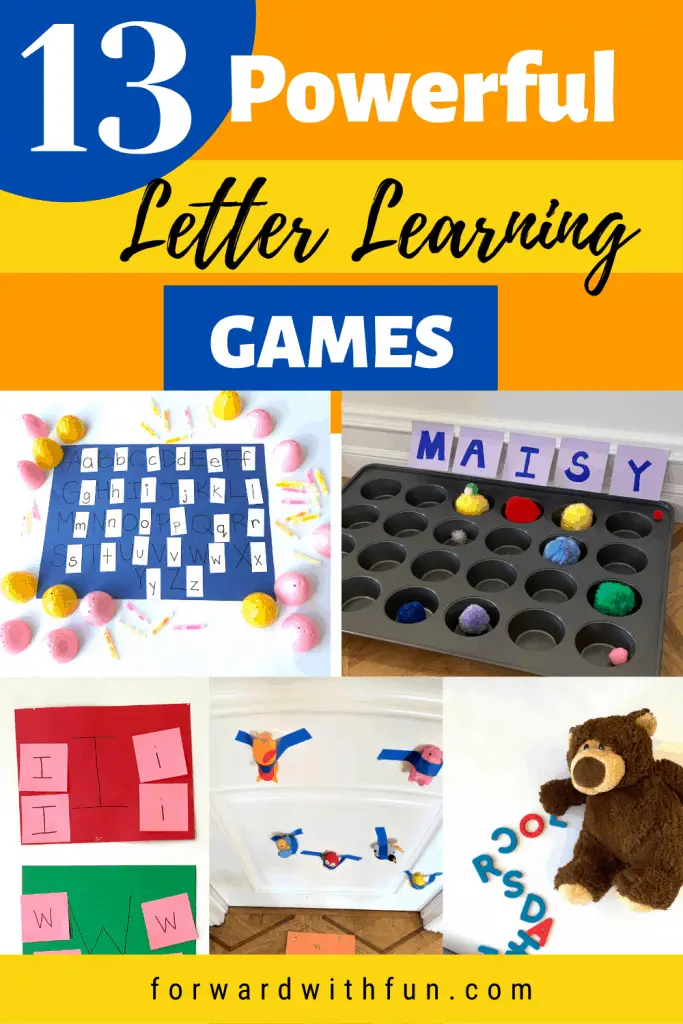
Learning letters is the first step in learning to read. Children in preschool and kindergarten largely focus on letter identification and letter sounds.
While some kids are naturally inclined to learn letters from a young age, others take longer and that's okay.
My mission is to making learning letters and how to read fun and hands on. So if you're looking for a letter sounds worksheet or some alphabet flashcards, this isn't the place.
Instead I'm going to show you my most favorite, hands-on letter learning games so that your kid is just as excited about the alphabet as I am (that's super excited...ahem...kindergarten teacher).
There is not one correct order of teaching letters but instead many different ways to choose which letters to focus on first.
No matter what order of teaching letters you choose, I would recommend only working on 5-7 new letters at a time to avoid overwhelming your child. They'll need lots of repetition for those letters to stick in their minds, so always add in some letters they already know when you're playing these games.
All you need are some Post-its, a fly swatter (or a hand), and you're ready to go. Call out letter names or letter sounds and have your little one jump and swat the letters. You can use numbers too!
Hide toys around the house or even just on a door with blue tape. Invite your child to play by telling them that the Toy Thief has stolen their precious toys and they, and they alone must rescue them.
At the rescue station, toys must be matched with their beginning sound, reinforcing the letter sounds while also working on phonemic awareness!
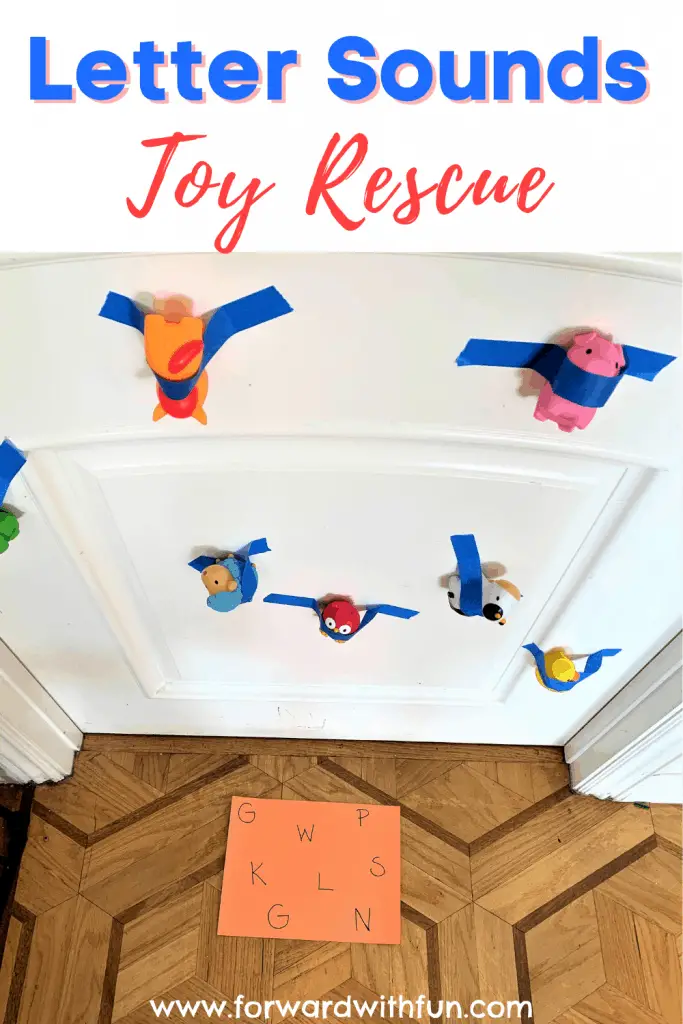
Got salad tongs? Blue tape? Any container? Combine with letters for this fun challenge!
It's simple, really...call out the letter sound and have your child pluck the corresponding letter from the container below, maneuvering through the blue tape.
It's a wonderful chance to practice fine motor skills as well!

Active kids don't like to sit to learn. Try Letter Sounds Stomp to get your child smashing their way to all their letters and sounds.
Got some tricky letters that continue to confuse your child? Pick out those 5 or so letters they're learning and place them on Post-its for this surprising little game that kids love!
Much like my very viral Pinterest post for teaching Sight Words, you can place letters on Post-its, lining them up with a muffin pan.
Throw the poms poms at the muffin pan and yell the letter name and sound! Kids and adults love this hands-on learning game that happens to also improve your aim.
Loving learning letters yet?
Pick out those target letters your child is working on and write them separately on a piece of construction paper. Hide 4 Post-it notes of the same letter around your home and have your child seek out those Post-its.
As your child matches the Post-it letter to the matching construction paper letter, they say the matching letter sounds!
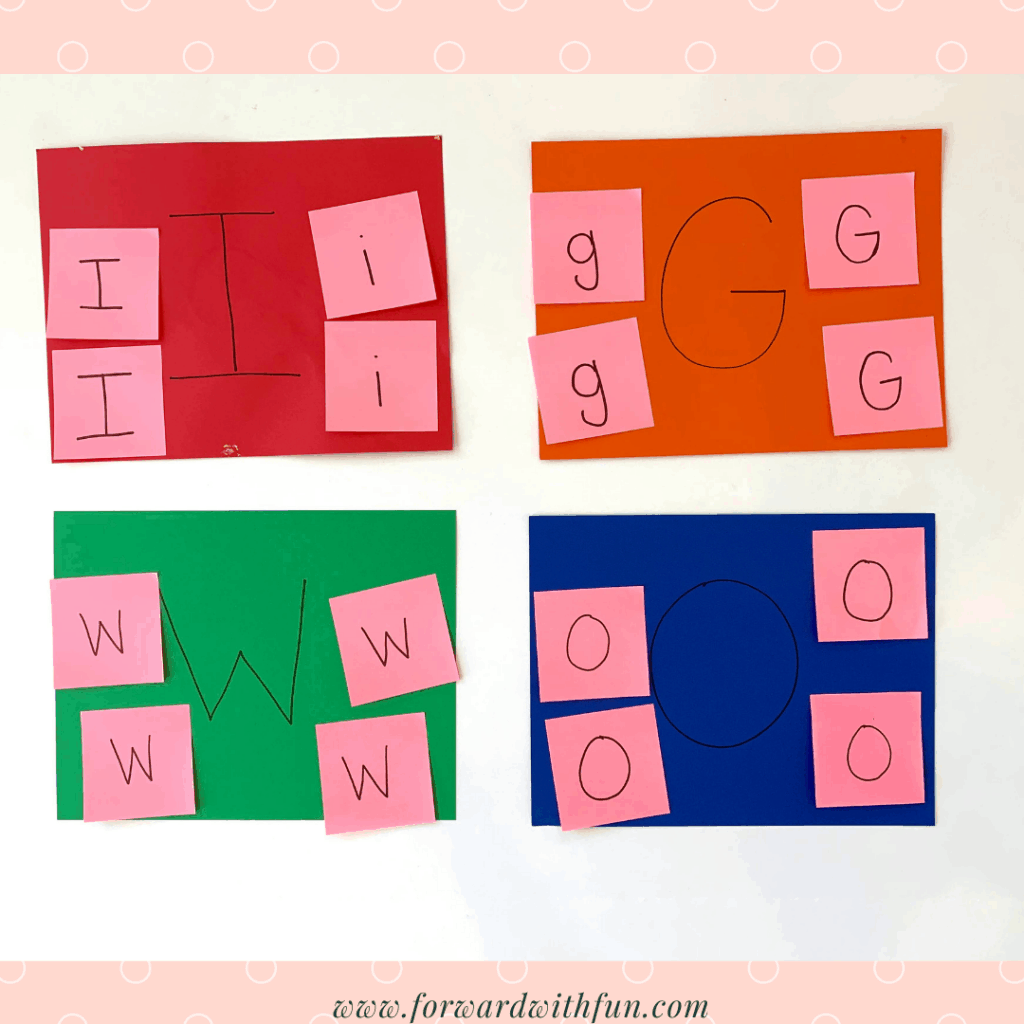
Surprise! Your favorite stuffed animal is going on a trip, but you need to pack some intriguing objects for it!
Place different letters in a bag. Take turns pulling out different letters and searching around the house that you can pack that begin with that letter sound.
Place the item with the letter and pack them for Bear's trip! Bon Voyage!
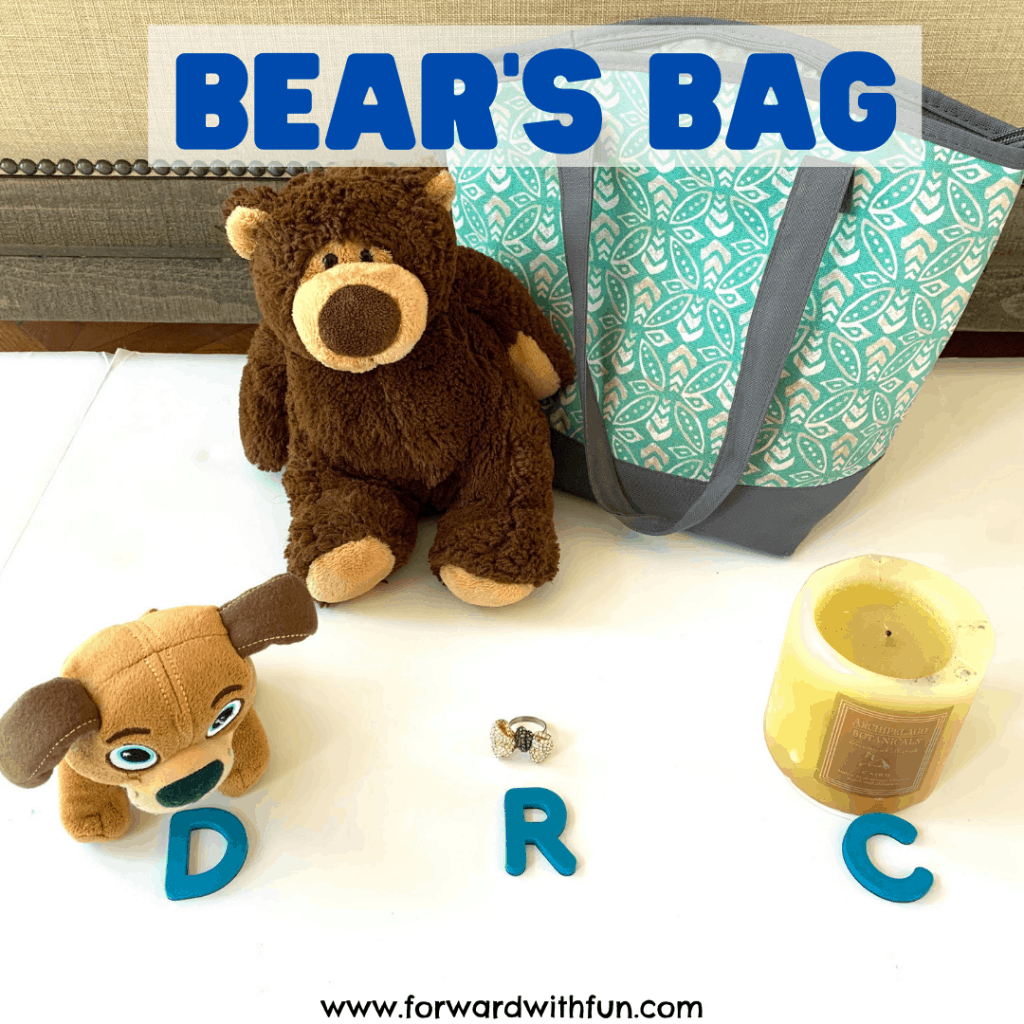
Learn letter sounds as Bear packs for a trip!
In this creative game, kids rescue their toys from under a laundry basket, unlocking the "code" by writing the letters that match the beginning sounds for each item. Genius!
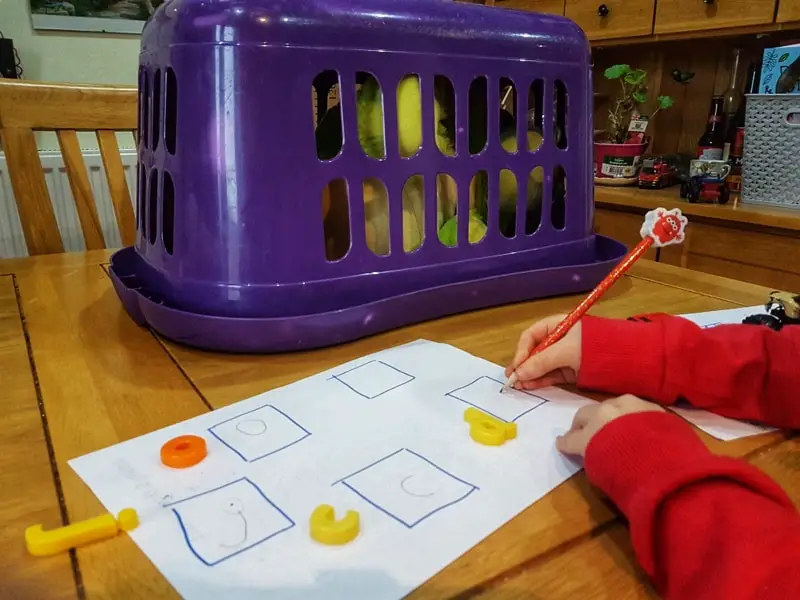
Got some blue painters tape? Create some zig zags for your child to traverse. Along the way, place some Post-it notes with letters they're learning on it.
Give your child a way they must cross the path: tip toe, jump, hop on one leg, walk, skip.
Each time they come to a letter, they need to stop, name it, and say it's letter sound.
Do your kids love trains and cars? They can even use their vehicles to traverse the zig zag path encountering letters as train stations or stop lights.
Take the fun outside with some chalk and play this silly, active hands-on learning game from The Imagination Tree. Draw letters on the ground and have children jump on the letters you name!
Grab those plastic Easter eggs and get ready for the most epic letter learning experience. Match the letters in the eggs to the mat, and we even added a secret ingredient! WOW!
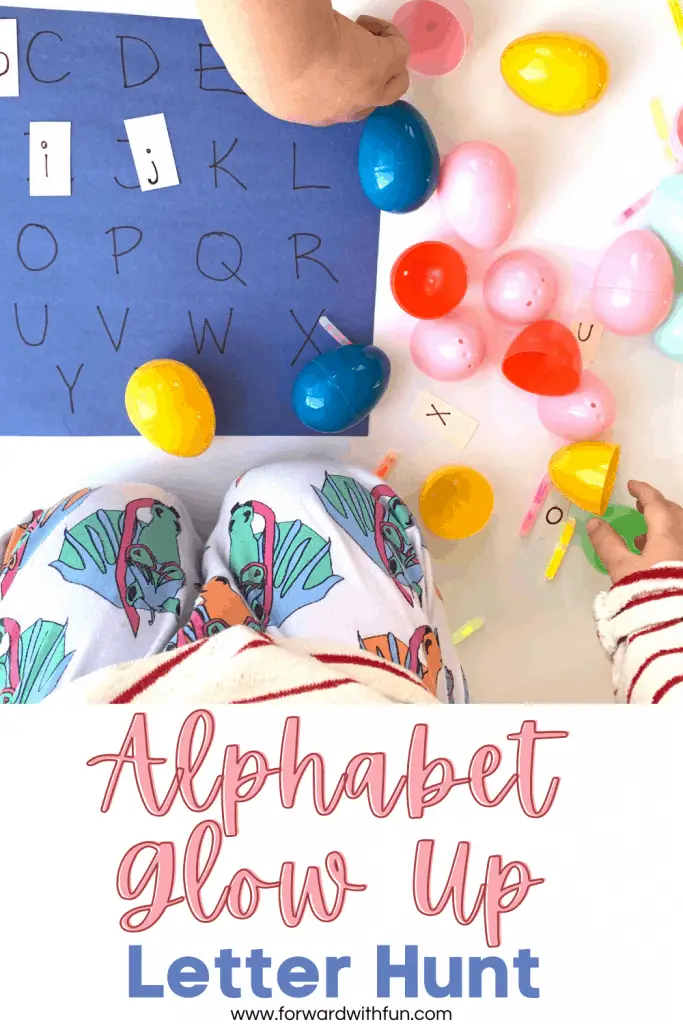
Practice matching letters with lowercase and capitals in this sensory soup bin that will keep even toddlers engaged!
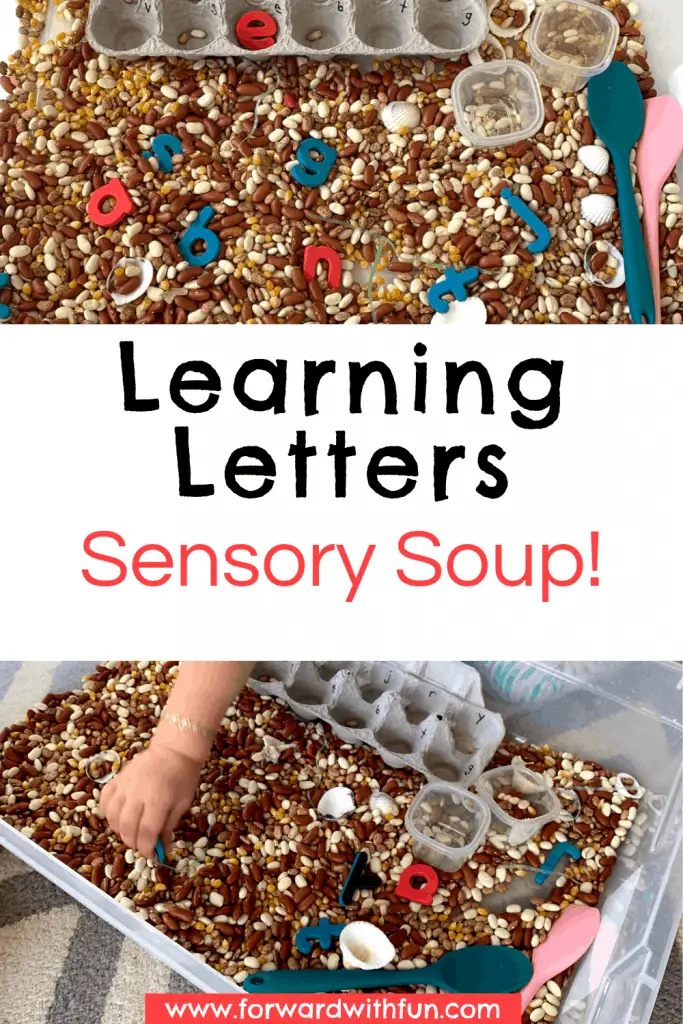
The newest addition to this list is a complete set of alphabet playdough mats. This activity promotes learning letters in 4 different ways and includes sensory, tactile, fine motor, and reading/writing in every single mat.
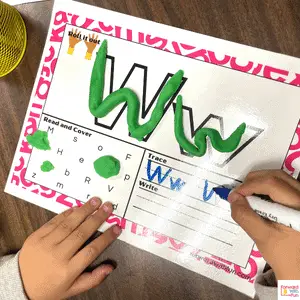
Searching for beginning sounds worksheets? You won't find those here. My goal in creating Forward with Fun is all about using play to create unique and memorable learning. Kids are more likely to engage and remember new skills when they are actively participating in experience, especially if it's a game! That's the secret to getting kids to LOVE learning!
Isolating beginning sounds is part of a set of early reading skills called phonemic awareness, the understanding that words are made up of sounds. When kids connect a specific sound to a letter name, that is called phonics.
*As an Amazon affiliate, I may get a small commission for purchases made through links in this post.
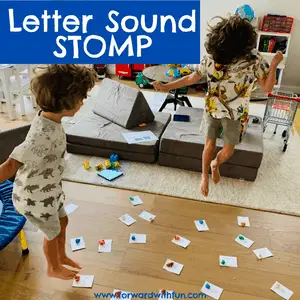

I'm sure the set-up laid out before your child is sure to inspire and delight them. To invite them to play share your Bag of Items.
As you pull items out, one at a time, ask your child whaat sound they hear at the beginning of the word, then find the matching letter on the ground. Once they find the letter that makes the beginning sound of that item they can jump, hop, or STOMP the Play-doh ball next to it!
Here is an example from our beginning sounds STOMP game.
Me: What's this? A hammer. What sound do you hear at the beginning of the word hammer?
Big Sis: /h/ /h/ Hammer.
Me: What letter makes the /h/ sound?
Big Sis: The H!
Me: Alright, let's stomp the H!
If your child doesn't know a letter sound, remind them. No big deal. We love to sing this phonics song we heard from a Leap Frog toy, "The B says /b/. The B says /b/. Every letter makes a sound. The B says /b/." If they don't know any letters, start with 2-3 objects. You can always simplify a game so they can still get important practice in with beginning sounds without knowing many letters names.
Before starting kindergarten, kids should be able to write their names and name some letters and sounds. (To grab your FREE kindergarten readiness checklist, check out this post.)
Mastery of all letter names and their corresponding sounds are expected at the end of kindergarten, according to USA Common Core standards:
CCSS.ELA-LITERACY.RF.K.1.D
Recognize and name all upper- and lowercase letters of the alphabet.
CCSS.ELA-LITERACY.RF.K.2.D
Isolate and pronounce the initial, medial vowel, and final sounds (phonemes) in three-phoneme (consonant-vowel-consonant, or CVC) words.1 (This does not include CVCs ending with /l/, /r/, or /x/.)
When your child starts showing interest in books and the words on the page, you can begin pointing out letters. This can be as early as 2 or even as late as 4 years old. All kids are different and show interest at different ages.